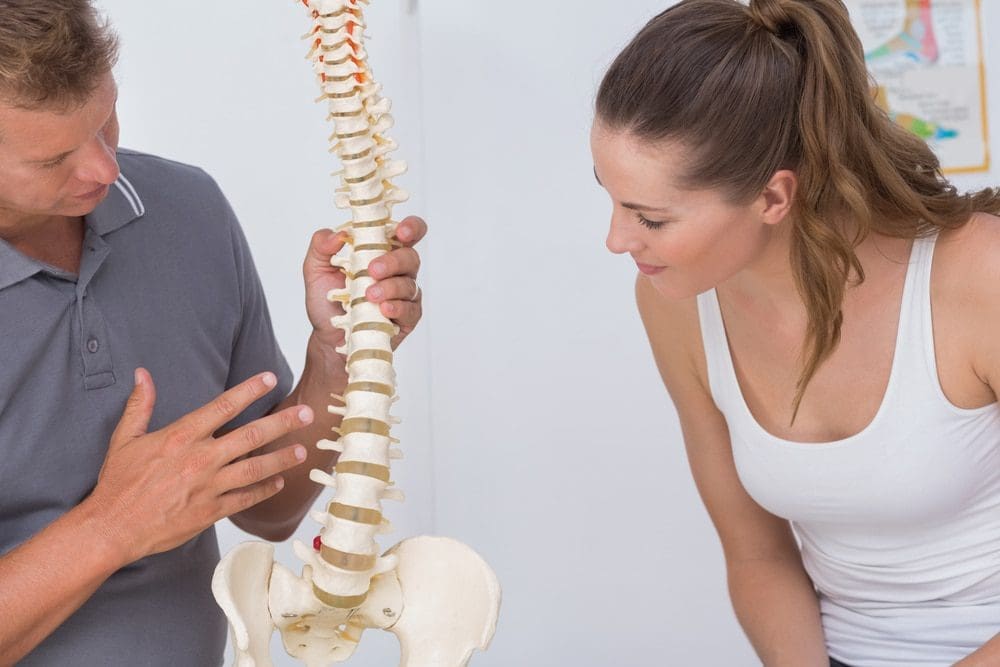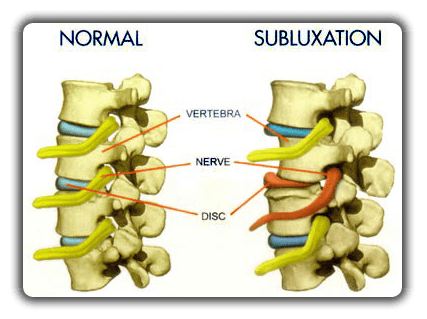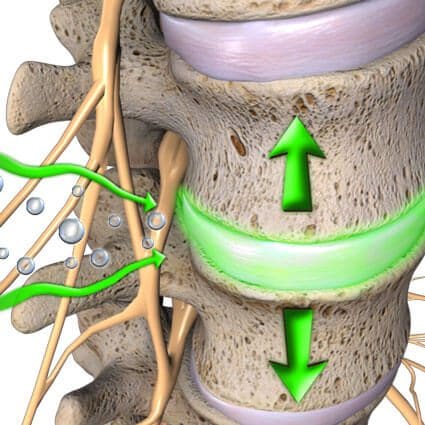Contents
Introduction
Misalignment of the spine can occur due to various factors, causing stress and joint shifting. The spine plays an important role by supporting the body’s weight and maintaining stability, consisting of vertebrae, facet joints, spinal nerves and cord, and intervertebral discs. The surrounding muscles, tissues, and ligaments protect the spinal cord from damage. However, the spine may develop chronic conditions due to axial load pressure, affecting the body. Fortunately, non-surgical and non-invasive treatments can realign the spine and naturally heal the body. This article discusses spinal subluxation and its symptoms, along with the effectiveness of spinal decompression in alleviating subluxation. We utilize and incorporate valuable information about our patients to certified medical providers using non-surgical therapies like spinal decompression to alleviate pain-like symptoms associated with spinal subluxation. We encourage referring patients to associated medical providers based on their findings while supporting that education is a remarkable tool to ask our providers essential questions at the patient’s request. Dr. Jimenez, D.C., comprises this information as an educational service. Disclaimer
What Is Spinal Subluxation?
Are you experiencing muscle tightness in your neck, back, or shoulders? Do you feel pain radiating down your arms or legs? Or are you experiencing muscle aches in different parts of your body? These issues may be caused by spinal subluxation, which research shows can occur in the cervical, thoracic, and lumbar spine sections. A spinal subluxation can be caused by traumatic injuries or normal factors that cause the spinal vertebrae to shift out of alignment. This can cause a lot of discomfort. Studies also reveal that spinal subluxation can interfere with neuron communication between the brain and the rest of the body, leading to unwanted symptoms that affect the functioning of the nervous and organ systems and overall health.
Symptoms Associated With Spinal Subluxation
A spinal subluxation happens when the spine shifts out of alignment due to traumatic or normal factors. According to Dr. Eric Kaplan, D.C, FIAMA, and Dr. Perry Bard, D.C., in their book “The Ultimate Spinal Decompression,” biomechanical instability can cause the surrounding muscles and joints to destabilize or increase antagonist coactivation to stabilize the body. Simple movements like bending, twisting, or turning can cause the surrounding muscles to overstretch and make the body feel unstable. Research studies mentioned that displacement in any part of the spinal skeletal frame could press against the surrounding nerves, which can cause neuron signals to be hardwired and create too much or too little communication with the surrounding muscles and joints. Other symptoms associated with spinal subluxation include:
- Muscle tightness around the back
- Pain and discomfort
- Headaches
- Limited mobility
- Tingling sensations
- Digestive and respiratory issues
- Low energy
Thoracic Spine Pain- Video
Do you experience pain or discomfort when twisting, turning, or bending? Have you felt muscle aches, pain, or tenderness in your back, or do you feel unsteady when walking? These symptoms may be caused by spinal misalignment or subluxation. Subluxation occurs as pressure compresses spinal discs, causing vertebrae to shift from their normal position. A subluxation can occur in different spine sections, resulting in overlapping risks. This causes pain in various body parts, known as referred pain. Fortunately, non-surgical treatments like chiropractic care and spinal decompression can reduce the effects of subluxation, realign the spine, and promote natural healing for muscles, ligaments, and joints. The video above explains thoracic spine pain symptoms and how manual and mechanical manipulation can alleviate pain-like symptoms, rehydrate spinal discs, and kick-start the body’s natural healing process.
Spinal Decompression Alleviating Spinal Subluxation
If you suffer from muscle pain associated with spinal subluxation, you can alleviate the associated pain symptoms in several ways. One option is spinal decompression, a non-surgical treatment shown to effectively reduce residual pain and disability, improve range of motion, and modulate neural mechanical sensitivity, as research studies mentioned. Through gentle spine stretching, spinal decompression helps realign the body and allows spinal discs to return to their original position. This, in turn, will enable nutrients, fluids, and oxygenated blood to rehydrate the discs and promote natural healing. For added benefits, spinal decompression can be combined with additional treatments, such as physical therapy and chiropractic care. Best of all, it is a safe and non-invasive treatment allowing individuals to be more mindful of how they move their bodies.
Conclusion
Spinal misalignment or subluxation can occur over time due to traumatic injuries or normal factors. This can cause the spinal vertebrae to shift out of alignment, leading to referred muscle pain and chronic issues that can eventually result in disability. However, non-surgical and non-invasive treatments like spinal decompression use mechanical traction to gently stretch the spine and realign it, releasing the body’s natural healing process. Additionally, non-surgical treatments like spinal decompression help individuals be more mindful of their bodies and prevent new injuries from occurring. Combining spinal decompression with other therapies can promote health and wellness in many individuals.
References
Kaplan, E., & Bard, P. (2023). The Ultimate Spinal Decompression. JETLAUNCH.
Disclaimer
General Disclaimer, Licenses and Board Certifications *
Professional Scope of Practice *
The information herein on "Vertebral Subluxation Complex Relieved By Spinal Decompression" is not intended to replace a one-on-one relationship with a qualified health care professional or licensed physician and is not medical advice. We encourage you to make healthcare decisions based on your research and partnership with a qualified healthcare professional.
Blog Information & Scope Discussions
Welcome to El Paso's Premier Wellness and Injury Care Clinic & Wellness Blog, where Dr. Alex Jimenez, DC, FNP-C, a Multi-State board-certified Family Practice Nurse Practitioner (FNP-BC) and Chiropractor (DC), presents insights on how our multidisciplinary team is dedicated to holistic healing and personalized care. Our practice aligns with evidence-based treatment protocols inspired by integrative medicine principles, similar to those on this site and on our family practice-based chiromed.com site, focusing on naturally restoring health for patients of all ages.
Our areas of multidisciplinary practice include Wellness & Nutrition, Chronic Pain, Personal Injury, Auto Accident Care, Work Injuries, Back Injury, Low Back Pain, Neck Pain, Migraine Headaches, Sports Injuries, Severe Sciatica, Scoliosis, Complex Herniated Discs, Fibromyalgia, Chronic Pain, Complex Injuries, Stress Management, Functional Medicine Treatments, and in-scope care protocols.
Our information scope is multidisciplinary, focusing on musculoskeletal and physical medicine, wellness, contributing etiological viscerosomatic disturbances within clinical presentations, associated somato-visceral reflex clinical dynamics, subluxation complexes, sensitive health issues, and functional medicine articles, topics, and discussions.
We provide and present clinical collaboration with specialists from various disciplines. Each specialist is governed by their professional scope of practice and their jurisdiction of licensure. We use functional health & wellness protocols to treat and support care for musculoskeletal injuries or disorders.
Our videos, posts, topics, and insights address clinical matters and issues that are directly or indirectly related to our clinical scope of practice.
Our office has made a reasonable effort to provide supportive citations and has identified relevant research studies that support our posts. We provide copies of supporting research studies upon request to regulatory boards and the public.
We understand that we cover matters that require an additional explanation of how they may assist in a particular care plan or treatment protocol; therefore, to discuss the subject matter above further, please feel free to ask Dr. Alex Jimenez, DC, APRN, FNP-BC, or contact us at 915-850-0900.
We are here to help you and your family.
Blessings
Dr. Alex Jimenez DC, MSACP, APRN, FNP-BC*, CCST, IFMCP, CFMP, ATN
email: coach@elpasofunctionalmedicine.com
Multidisciplinary Licensing & Board Certifications:
Licensed as a Doctor of Chiropractic (DC) in Texas & New Mexico*
Texas DC License #: TX5807, Verified: TX5807
New Mexico DC License #: NM-DC2182, Verified: NM-DC2182
Multi-State Advanced Practice Registered Nurse (APRN*) in Texas & Multi-States
Multi-state Compact APRN License by Endorsement (42 States)
Texas APRN License #: 1191402, Verified: 1191402 *
Florida APRN License #: 11043890, Verified: APRN11043890 *
License Verification Link: Nursys License Verifier
* Prescriptive Authority Authorized
ANCC FNP-BC: Board Certified Nurse Practitioner*
Compact Status: Multi-State License: Authorized to Practice in 40 States*
Graduate with Honors: ICHS: MSN-FNP (Family Nurse Practitioner Program)
Degree Granted. Master's in Family Practice MSN Diploma (Cum Laude)
Dr. Alex Jimenez, DC, APRN, FNP-BC*, CFMP, IFMCP, ATN, CCST
My Digital Business Card
Licenses and Board Certifications:
DC: Doctor of Chiropractic
APRNP: Advanced Practice Registered Nurse
FNP-BC: Family Practice Specialization (Multi-State Board Certified)
RN: Registered Nurse (Multi-State Compact License)
CFMP: Certified Functional Medicine Provider
MSN-FNP: Master of Science in Family Practice Medicine
MSACP: Master of Science in Advanced Clinical Practice
IFMCP: Institute of Functional Medicine
CCST: Certified Chiropractic Spinal Trauma
ATN: Advanced Translational Neutrogenomics
Memberships & Associations:
TCA: Texas Chiropractic Association: Member ID: 104311
AANP: American Association of Nurse Practitioners: Member ID: 2198960
ANA: American Nurse Association: Member ID: 06458222 (District TX01)
TNA: Texas Nurse Association: Member ID: 06458222
NPI: 1205907805
| Primary Taxonomy | Selected Taxonomy | State | License Number |
|---|---|---|---|
| No | 111N00000X - Chiropractor | NM | DC2182 |
| Yes | 111N00000X - Chiropractor | TX | DC5807 |
| Yes | 363LF0000X - Nurse Practitioner - Family | TX | 1191402 |
| Yes | 363LF0000X - Nurse Practitioner - Family | FL | 11043890 |










